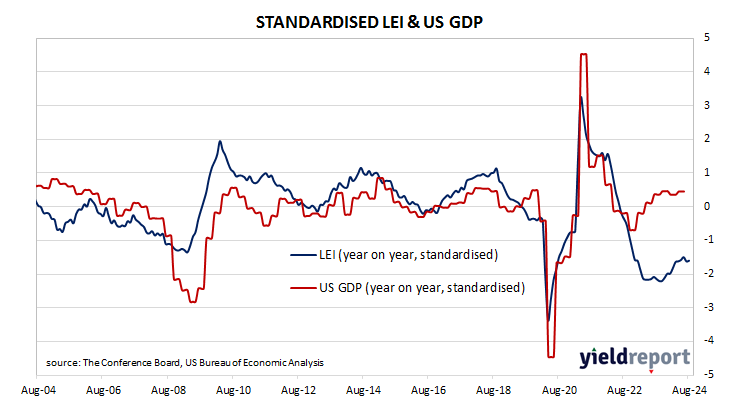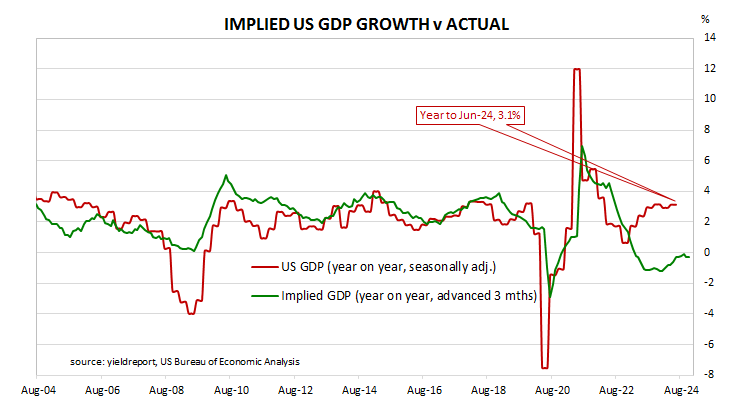Summary: Conference Board leading index down 0.2% in August, decline smaller than expected fall; CB: expects US real GDP growth to lose momentum in second half; short-term US Treasury yields down, longer-term yields up; rate-cut expectations firm slightly; CB: latest reading driven by new orders.
The Conference Board Leading Economic Index (LEI) is a composite index composed of ten sub-indices which are thought to be sensitive to changes in the US economy. The Conference Board describes it as an index which attempts to signal growth peaks and troughs; turning points in the index have historically occurred prior to changes in aggregate economic activity. Readings from March and April of 2020 signalled “a deep US recession” while subsequent readings indicated the US economy would recover rapidly. Post-2022 readings implied US GDP growth rates would turn negative but that has not been the case so far.
The latest reading of the LEI indicates it decreased by 0.2% in August. The fall was a slightly smaller one than the 0.3% decline which had been generally expected and not as severe as July’s 0.6% decrease.
“Overall, the LEI continued to signal headwinds to economic growth ahead,” said Justyna Zabinska-La Monica of The Conference Board. “The Conference Board expects US real GDP growth to lose momentum in the second half of this year as higher prices, elevated interest rates and mounting debt erode domestic demand.”
Short-term US Treasury bond yields declined on the day while longer-term yields increased. By the close of business, the 2-year Treasury yield had lost 3bps to 3.59%, the 10-year yield had added 1bp to 3.72% while the 30-year yield finished 3bps higher at 4.05%.
In terms of US Fed policy, expectations of a lower federal funds rate in the next 12 months firmed slightly, with at least another seven 25bp cuts still factored in. At the close of business, contracts implied the effective federal funds rate would average 4.555% in November, 4.32% in December and 3.76% in February. August 2025 contracts implied 2.975%, 185bps less than the current rate.
“The erosion continued to be driven by new orders, which recorded its lowest value since May 2023,” added Zabinska-La Monica. “A negative interest rate spread, persistently gloomy consumer expectations of future business conditions and lower stock prices after the early-August financial market tumult also weighed on the Index.”
The Conference Board stated in August it expected annualised growth rates of 0.6% and 1.0% in the respective third and fourth quarters of 2024. Regression analysis suggests the latest reading implies a 0.3% year-on-year contraction rate in November, unchanged from the year-to-October growth rate after revisions.



